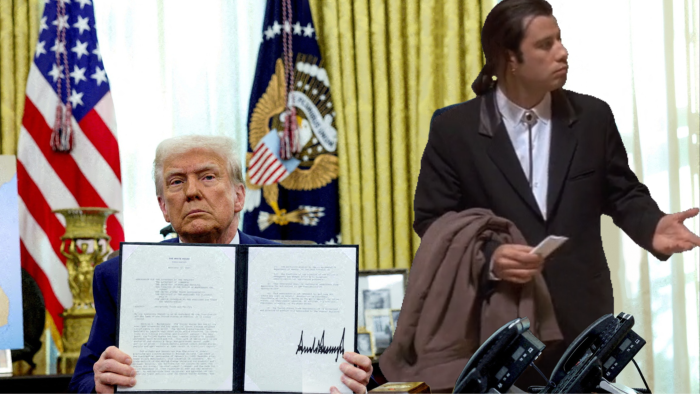Unlock the White House Watch newsletter for free
Your guide to what the 2024 US election means for Washington and the world
Compared with the past, the present always feels uncertain. To the attentive analyst — or even human — risks abound.
Today certainly feels pretty risky and uncertain. But how does it really measure up?
Back in 2022, a couple of Federal Reserve economists — Dario Caldara and Matteo Iacoviello — published a paper in the American Economic Review that attempted to quantify geopolitical uncertainty.
They built upon an historical database containing tens of millions of newspaper articles, and scanned a further 30,000 articles in a month from English-language newspapers (including the Financial Times). They then assessed the frequency of newspaper articles discussing adverse geopolitical events as a percentage of total articles.
Having released replication packages to allow others to reproduce their results, and kept their website updated with close-to-current data, the Caldara/Iacoviello model has become fairly widely used. Here’s how it looks:
Their model has done a pretty good job in spiking at the times you’d expect a geopolitical risk index to spike. And although its latest readings are uncomfortably high, it isn’t in event-shock territory. So risky, but not super-risky.
But when we move away from broad measures of geopolitical risk and towards measures of policy uncertainty the picture darkens.
In 2016, three academics — Scott Baker, Nicholas Bloom, and Steven Davis — put together an index of US economic policy uncertainty based not only on newspaper articles, but also upon the number of federal tax code provisions set to expire, and a measure of disagreement among economic forecasters. Furthermore, they built topic-specific subindices of policy uncertainty.
How do things look at the headline level?
Yikes!
Okay, so a big input into this index is an historically normalised news-based component, and we’ve included this component to show how much uncertainty is being transmitted through the American media. But still, we’re approaching the kinds of uncertainty readings seen only during a global pandemic that included the economy being pretty much shut down.
What about uncertainty across different categories of economic policy? Here we move back again to news-only indices.
We’ve popped the relevant Baker/Bloom/Davis model data into a chart below — use the filter to toggle between uncertainty indices as they relate to Monetary Policy, Fiscal Policy, Health Care policy, Entitlement programs, etc:
While there isn’t an unprecedented level of uncertainty in many of these areas (trade policy being a notable exception), uncertainty readings are close to extremes in quite a large number of policy areas.
Alphaville highlighted the global version of this uncertainty index back in February, and how it had become disconnected to market measures of uncertainty used in options pricing. It seems that markets have since caught up.
Why does this matter? Businesses are basically planning machines. If they lack confidence in the future they’re less likely to invest or hire people. Not great.
Now, we know what you’re thinking. How would all these categorical uncertainty index data look in an animated interactive radar chart that plotted values for each category of economic uncertainty in the form of its percentile reading relative to its own history. Don’t worry — we’ve got your back:
As FT trade guru Alan Beattie has reminded us all for the last two months, when it comes to US policy, Nobody Knows Anything.
Source link












